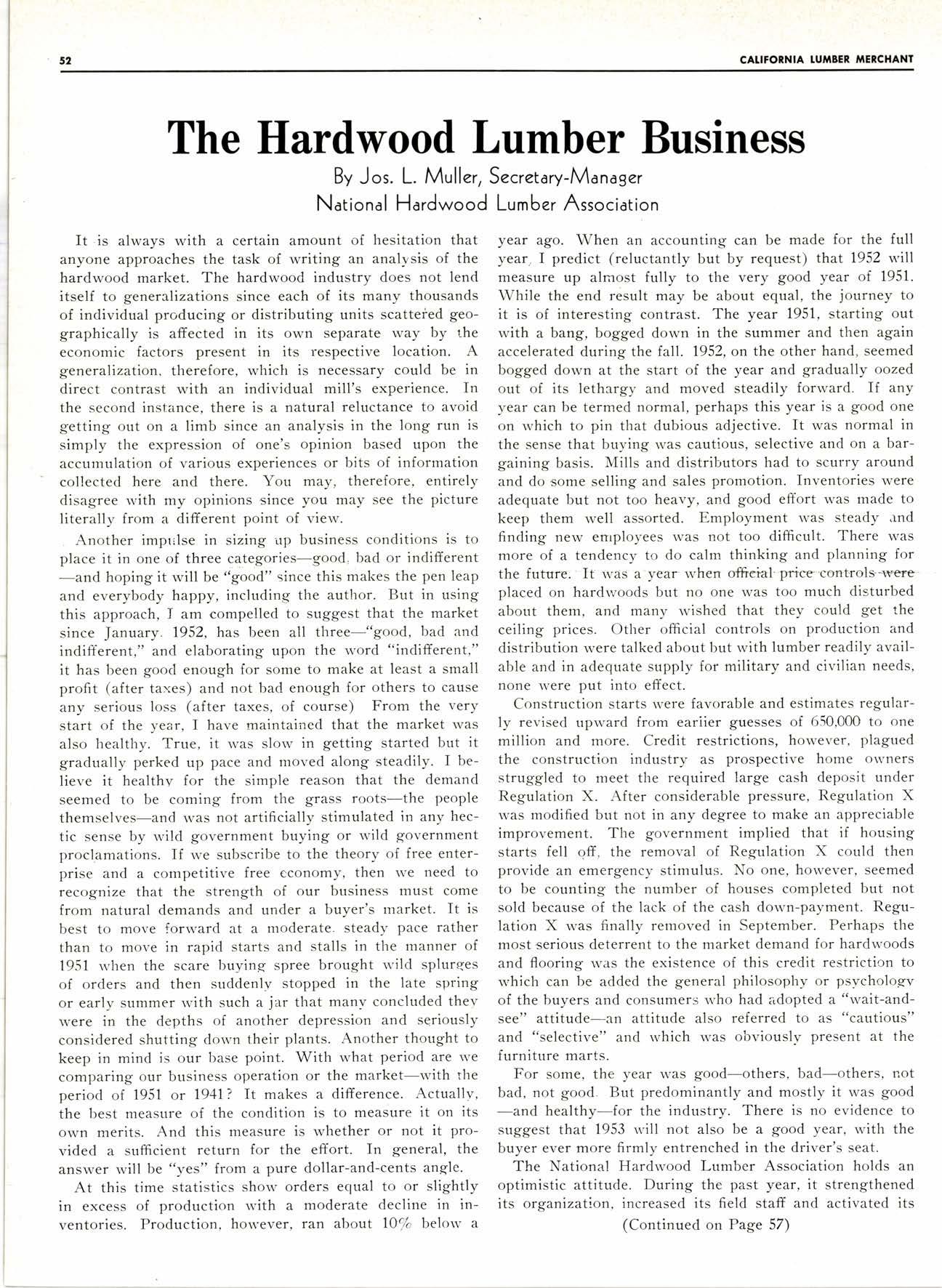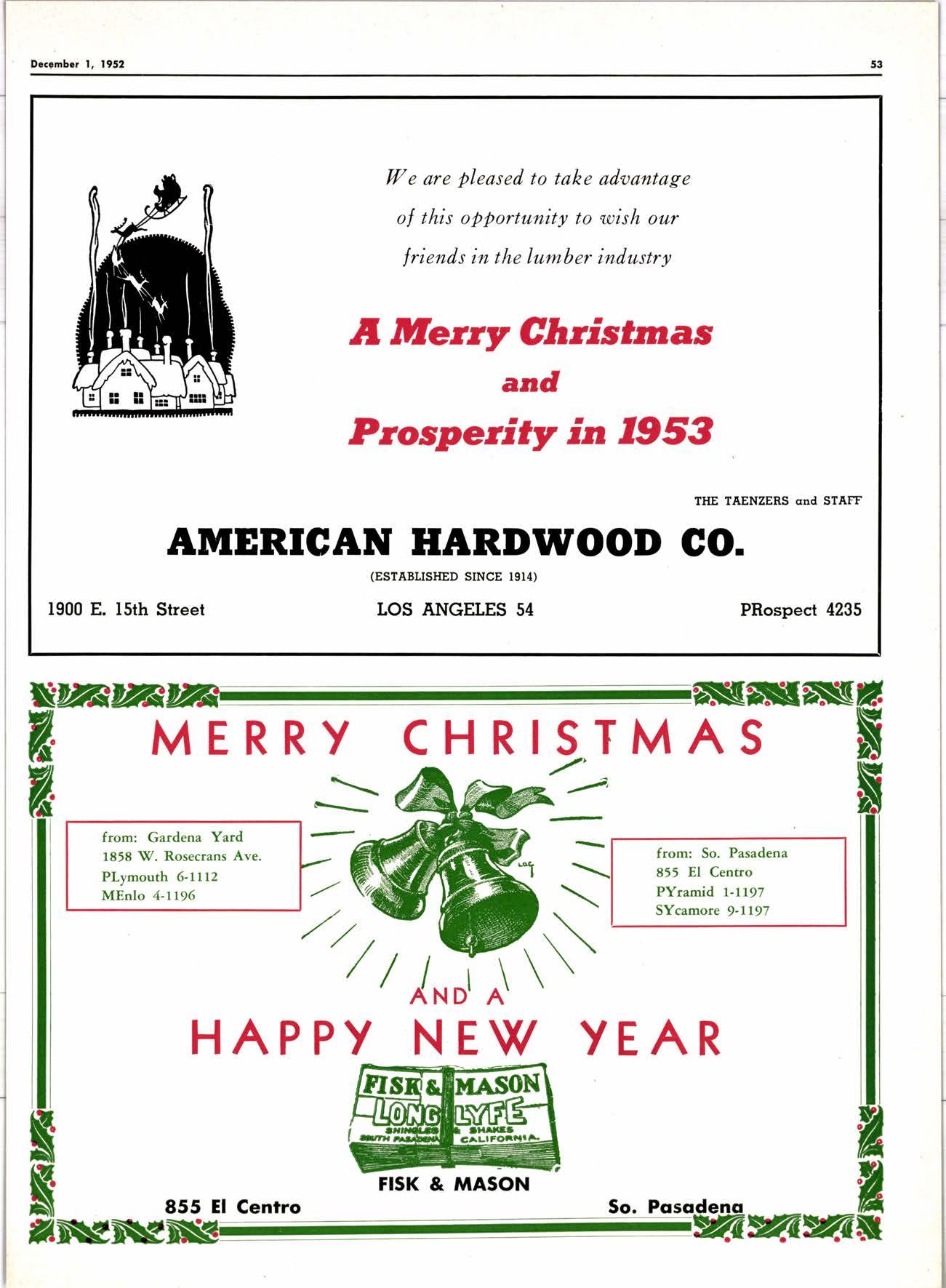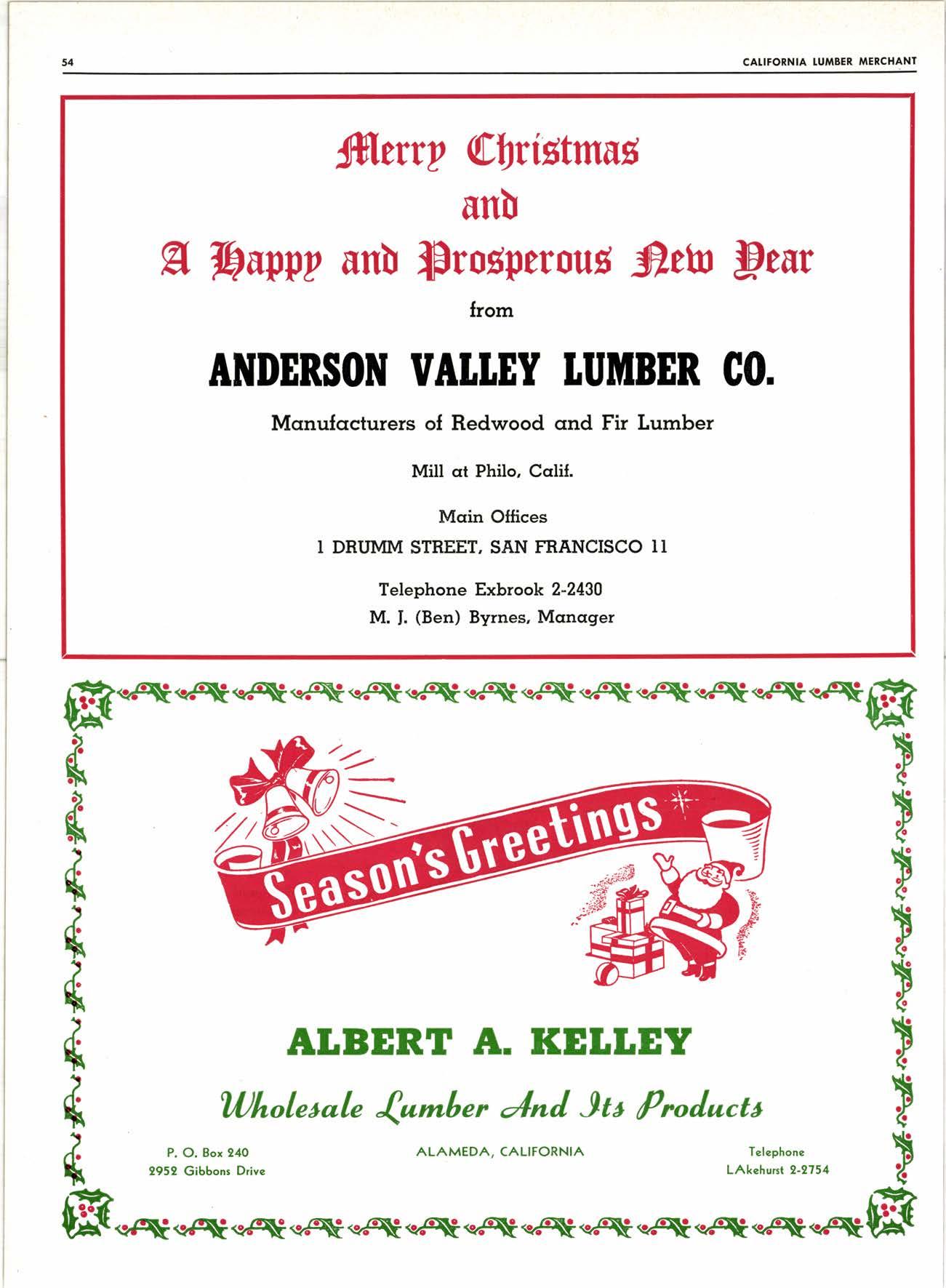
4 minute read
The Hardwood Lumber Business
By Jos. L. Muller, Secretary-Manager National Hordwood Lumber Association
It is always with a certain amount of hesitation that anyone approaches the task ofwriting an analysis of the hardwood market. The hardwood industry does not lend itselfto generalizations since each of its many thousands of individual producing or distributing units scatteied geographically is affected in its own separate way by the economic factors present in its respective location. A generalization. therefore, which is necessary could be in direct contrast with an individual mill's experience. In the second instance, there is a natural reluctance to avoid getting out on a limb since an analysis in the long run is simply the expression of one's opinion based upon the accumulation of various experiences or bits of information collected here and there. You may, therefore, entirely disagree rvith my opinions since you may see the picture literally from a different point of view.
Another imprilse in sizing up business conditions is to place it in one of three categories-good, bad or indifierent -and hoping itwill be "good" since this makes the pen leap and everybody happy, including the author. But in using this approach, f am compelled to suggest that the market since January. 1952, has been all three-"good, bad and indifferent," and elaborating upon the word "indifferent," it has been good enough for some to make at least a small profit (after taxes) and not bad enough for others to cause any serious loss (after taxes, of course) From the very start of the year, I have maintained that the market r'vas also healthy. True, it rvas slow in getting started butit gradually perked up pace and moved along steadily. I believe it healthv for the simple reason that the demand seemed to be coming from the grass roots-the people themselves-and was not artificially stimulated in any hectic sense by wild government buying orwild government proclamations. If we subscribe to the theory of free enterprise and a competitive free economy, then rve need to recognize that the strength of our business must come from natural demands and under a buyer's rnarket. It is best to move forward at a moderate. steady pace rather than to move in rapid starts and stalls in the manner of 1951 when the scare buying spree brought rvild splurges of orders and then suddenly stopped in the late spring or early summer with such a jar that manv concluded thev rvere in the depths of another depression and sqriously considered shutting down their plants. Another thought to keep in mind is our base point. With what period are we comparing our business operation or the market-with the period of 1951 or 7941? It makes a difference. Actuallv, the best measrlre of the condition isto measure it on its own merits. And this measure is whether or not it provided a sufificient return for the effort. fn general, the answer will be "yes" from a pure dollar-and-cents angle.
At this time statistics show orders equal to or slightly in excess of production with a moderate decline in inventories. Production, hou'ever, ran about 10% belorv a year ago. When an accounting can be made for the full year- I predict (reluctantly but by request) that 1952 u'ill measure up almost fully to the very good year of 1951. While the end result may be about equal, the journey to it is of interesting contrast. The year 1951, starting out with a bang, bogged down in the summer and then again accelerated during the fall. 1952, on the other hand, seemed bogged down at the start of the year and gradually oozed out of its lethargy and moved steadily forward. If any year can be termed normal, perhaps this year is a good one on which to pin that dubious adjective. It was normal in the sense that buying was cautious, selective and on a bargaining basis. Mills and distributors had to scurry around and do some selling and sales promotion. Inventories were adequate but not too heavy, and good effort was made to keep them well assorted. Employment u'as steady ,rnd finding new enrployees was not too difficult. There was more of a tendency to do calm thinking and planning for the future- If rvas a year when offieial'price cont'rols-*we-re placed on hardrvoods but no one was too much disturbed about them, and many wished that they could get the ceiling prices. Other official controls on production and distribution were talked about but with lumber readily available and in adequate supply for military and civilian needs, none were put into effect.
Construction starts were favorable and estimates regularly revised upward from eariier guesses of 650,000 to one million and more. Credit restrictions, however, plagued the construction industry as prospective home o\\rners struggled to meet the required large cash deposit under Regulation X. After considerable pressure, Regulation X rvas modified bnt not in any degree to make an appreciable improvement. The government implied that if housing start,s fell off. the removal of Regulation X could then provide an emergency stimulus. No one, however, seemed to be counting the number of houses completed but not sold because of the lack of the cash down-payment. Regulation X was finally removed in September. Perhaps the most serious deterrent to the market demand for hardwoods and flooring was the existence of this credit restricticn to li'hich can be added the general philosophy or psvchologv of the buyers and consumers who had a,dopted a "wait-andsee" attitude-an attitude also referred to as "cautious" and "selective" and rvhich was obviously present at the furniture marts.
For some, the year was good-others, bad-others, not bad, not good. But predominantly and mostly it was good -and healthy-for the industry. There is no evidence to suggest that 1953 u'ill not also be a good year, with the buyer ever more firmly entrenched in the driver's seat.
The National Hardwood Lumber Association holds an optimistic attitude. During the past year, it strengthened its organization, increased its field staff and activated its
(Continued on Page 57)
We are pleased to take advantage of this opportunitj, to wish our friends in the

I.UMBER CO.
Mcnulcrcturers of Redwood qnd Fir Lumber

Mill crt Philo, Cclif.
Telephone Exbrook 2-2490










